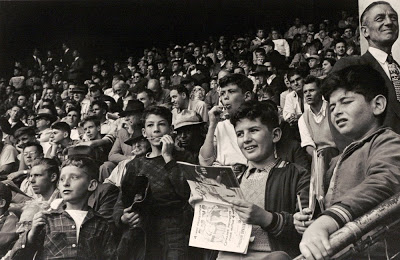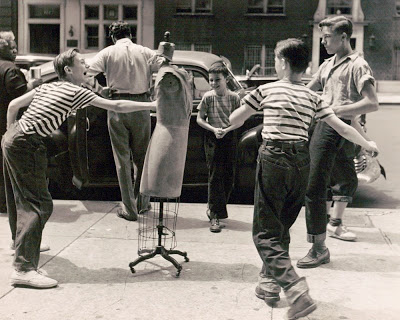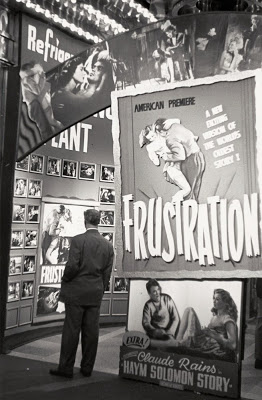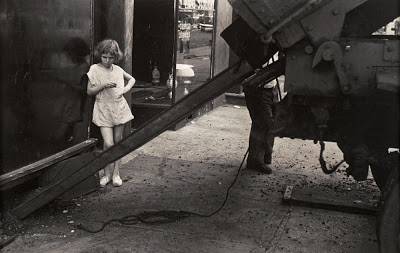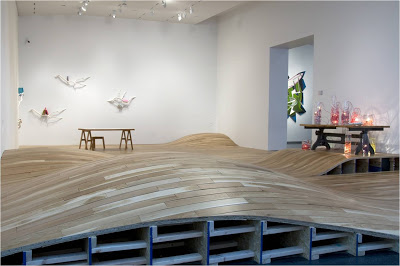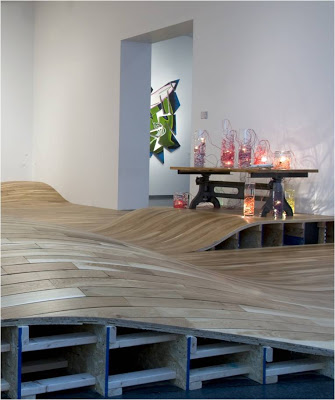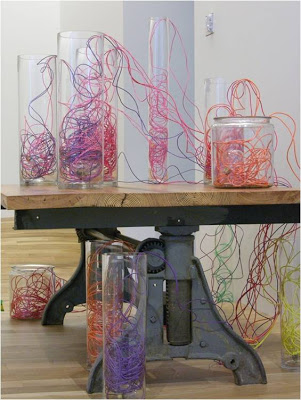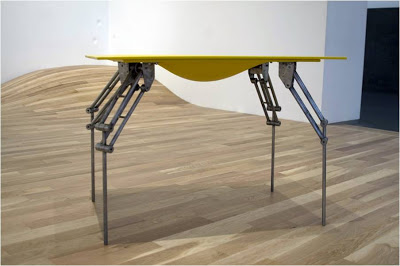Tag Archives: Nelson-Atkins Museum of Art
Homer Page at the Nelson
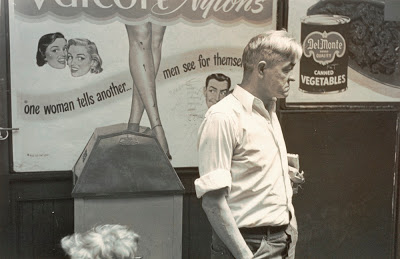
The fellowship allowed Page to focus on his photography for a year. While he was widely recognized for this work, he transitioned into a professional career as a magazine photographer. Few of his photographs were in private hands and his work was largely forgotten by the time of his death in 1985.
In Brief
 If you are interested in miniatures, like those offered by Elle Shushan, there is a fine collection at the Nelson-Atkins here in town. The collection is made up of 300-ish pieces originally donated by Mr. and Mrs. John W. Starr. A smaller selection is on display though the pieces do rotate so it’s worth checking in on each (frequent) visit. They are mounted over small mirrors so you can see the backs, which are beautifully decorated, as well.
If you are interested in miniatures, like those offered by Elle Shushan, there is a fine collection at the Nelson-Atkins here in town. The collection is made up of 300-ish pieces originally donated by Mr. and Mrs. John W. Starr. A smaller selection is on display though the pieces do rotate so it’s worth checking in on each (frequent) visit. They are mounted over small mirrors so you can see the backs, which are beautifully decorated, as well.
Cross Pollination
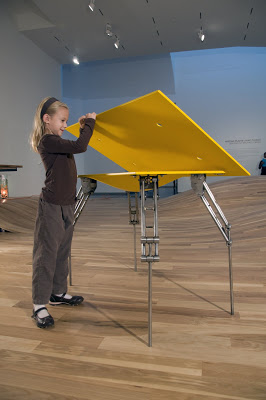 I always have a little cosmic jolt while traveling, especially by air. Even at my age it seems wonderful and shocking to get up and have breakfast one place, then pick up carpool halfway across the country four hours later. Furthering this sensation on my last trip, I had the delight of visiting the Calder exhibit at the Whitney in New York, then the distinct pleasure of a tour of the Michael Cross exhibit when I returned home at the Nelson-Atkins Museum of Art.
I always have a little cosmic jolt while traveling, especially by air. Even at my age it seems wonderful and shocking to get up and have breakfast one place, then pick up carpool halfway across the country four hours later. Furthering this sensation on my last trip, I had the delight of visiting the Calder exhibit at the Whitney in New York, then the distinct pleasure of a tour of the Michael Cross exhibit when I returned home at the Nelson-Atkins Museum of Art.
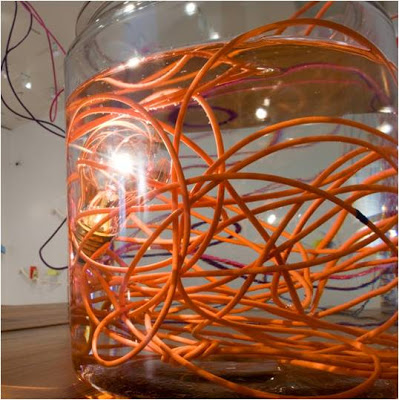 The Flood lights are cylinders of water containing coils of electrical wire and light bulbs. Beautiful and arresting, but disturbing. More than just function, there is a very real play between attraction and repulsion.
The Flood lights are cylinders of water containing coils of electrical wire and light bulbs. Beautiful and arresting, but disturbing. More than just function, there is a very real play between attraction and repulsion.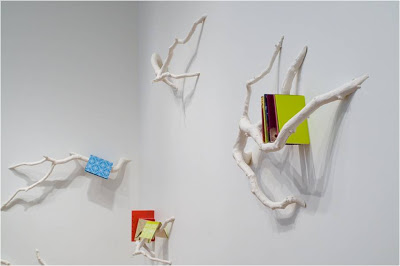 Lunuganga’s function is limited only by your imagination. Bookcase, clothesline, towel rack or art. I’m curious it they could be used as steps as well if one were a loft dweller.
Lunuganga’s function is limited only by your imagination. Bookcase, clothesline, towel rack or art. I’m curious it they could be used as steps as well if one were a loft dweller. One of the most captivating pieces is the desk in the second image. The top is moulded with indentations where you might anchor your right elbow, another which holds the crook of your left arm if you were to put your head down upon it to rest. If you do this, you will feel a steady beat, a pulse, which emanates from within the piece. It is designed with a heat source at the same spot that would be right under your hand. As someone who spends a good little bit of time at her desk, I can’t imagine a better tool for contemplation.
One of the most captivating pieces is the desk in the second image. The top is moulded with indentations where you might anchor your right elbow, another which holds the crook of your left arm if you were to put your head down upon it to rest. If you do this, you will feel a steady beat, a pulse, which emanates from within the piece. It is designed with a heat source at the same spot that would be right under your hand. As someone who spends a good little bit of time at her desk, I can’t imagine a better tool for contemplation.Sometimes Moore is More
 When I was posting on sculpture yesterday, I remembered a medium-good movie “Object of Beauty” starring Andie McDowell, John Malkovich and a diminutive Henry Moore sculpture. The couple is in a bit of a financial pickle and “he” wants to sell “her” statue to get them out. Naturally, she balks. Ironically, the deaf maid steals the statue because “it speaks to her.”
When I was posting on sculpture yesterday, I remembered a medium-good movie “Object of Beauty” starring Andie McDowell, John Malkovich and a diminutive Henry Moore sculpture. The couple is in a bit of a financial pickle and “he” wants to sell “her” statue to get them out. Naturally, she balks. Ironically, the deaf maid steals the statue because “it speaks to her.”
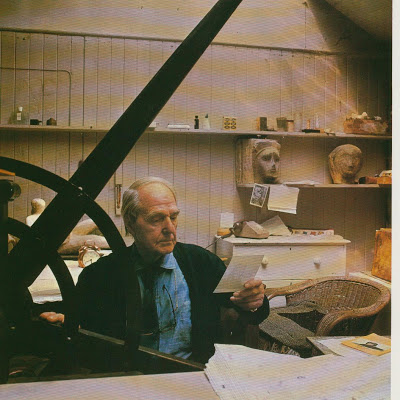
Henry Moore is considered by many to be one of the greatest sculptors of the 20th century. His farm, “Hoglands,” was featured in Architectural Digest in March of 1980.
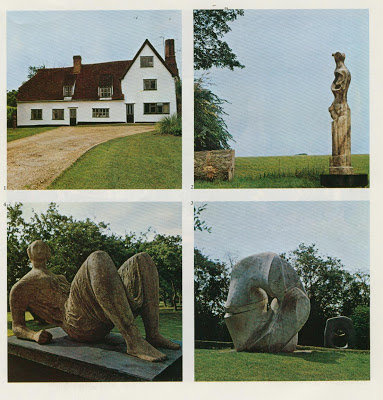
The house was falling apart when Moore and his wife, Irina, purchased it in the 1940’s, but they dug in and made it their own.
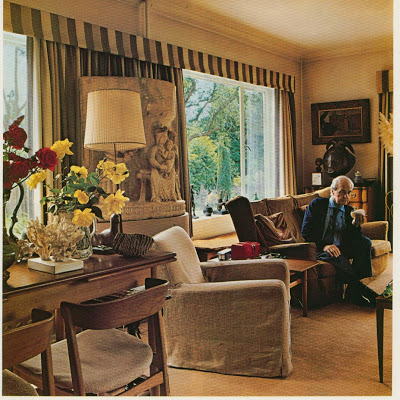
While the living room furniture and palette are simple and neutral, the author reports that there were literally hundreds of objects. “Pebbles, papier mache eggs, Cycladic sculptures, African masks, pre-Columbian artifacts..a French carving of a Madonna and Child, gourds, flints and a Medieval marble relief.”
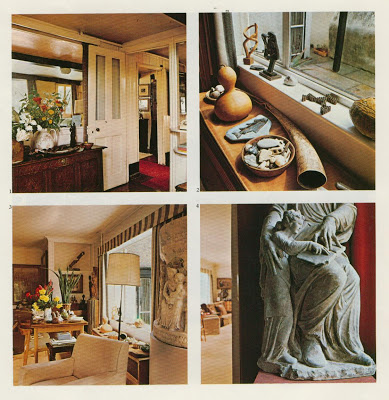
Each piece had a personal attachment, evoked a memory, but also reflected Moore’s fascination with shape and form.
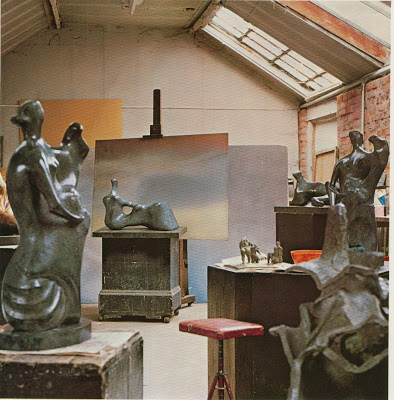
These images are of the studio; Moore is mostly known for his large, outdoor sculpture. He felt that sculpture placed outdoors should be large in scale to stand up to its surroundings.
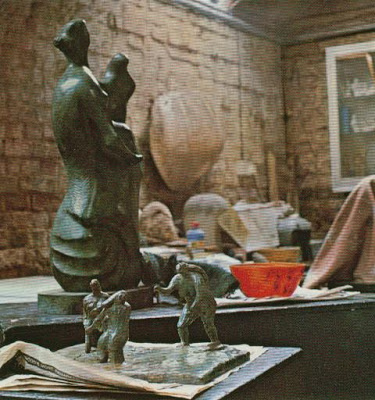
The smaller pieces are studies for the larger works. Moore initially used preliminary sketches, but could not capture the scale of the completed work, so he moved to executing the sculpture instead. Irina was a gardener and they enjoyed placing Moore’s pieces in the pastures with the sheep. He says in the article that he didn’t care for sculpture gardens. “They nullify the whole point of the sculpture.”
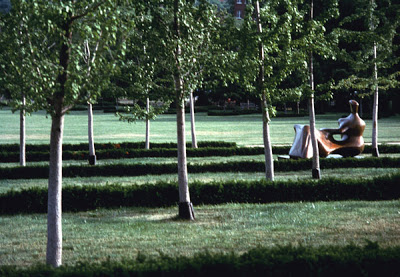
Fortunately, he changed his mind. Our local museum, the Nelson-Akins acquired a large selection of Moore’s sculptures several years ago through the generous support of the Hall family. Just to give the Midwest its due, the sculptures were purchased from a collector in Wichita. Kansas. Moore was able to see the site and placed some of the sculpture himself. The garden is a magical place; the pieces are not just plopped down, you discover them here. It’s a wonderful spot to take children as the pieces are so big, huge, even to an adult, and you are moving, walking, running, talking. No shushing.
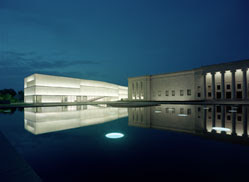
The old part of the Nelson is old. Marble, terrazzo, columns. We were fortunate to welcome the new Bloch Building last year. Controversial? Sure. We tend to be a bit conservative here and don’t like folks messing with our landmarks. But one of my son’s friends said, “You know, they couldn’t match it. And if you can’t match it, you need to do something really different.” Agreed. The addition adds to the site inside and out. It’s, well, sculptural.






